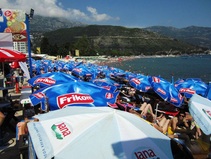 The Beach at Budva.
The Beach at Budva. My trip took me into Montenegro and around the Boca Kotorska, the mouth, which is major inlet that is connected to the sea by a passage. Surrounded by high mountains the inlet curves around the mountains which run parallel with the sea, forming what must by one the safest anchorages on earth. Our journey took us all around the inlet to the town of Kotor on its furthest and safest point, a place of strategic importance for centuries. In many ways a sort of Dubrovnik in miniature, an old city heavily defended by city walls and fortifications that stretched up high up the mountainside. Again another car free city that’s great to wander about despite having to share it with passengers from a cruise ship, which makes it feel very crowded.
There are subtle differences between Croatia and Montenegro, things are not as well maintained, the roads are narrower and it’s a bit shabby in parts. The Cyrillic alphabet is used for some notices and signs, and some cars have Serbian plates. In Kotor, there are Orthodox churches filled with incense and icons and decorated with the Serbian flag next to baroque Catholic churches. Despite Montenegro not being in the EU, it uses the Euro as its national currency.
We drive onto the seaside resort of Budva which looks a prosperous place with lots of buildings going up; mostly apartments aimed at the Serbian/Russian market and a large shopping mall. On the seashore the beach is packed with good looking young men and women all having a good time; if you’re young it looks like a great place to go for a holiday. On the way back we cross the Boca’s mouth on a ferry that crosses at the narrowest part, for the short drive into Croatia.
There are subtle differences between Croatia and Montenegro, things are not as well maintained, the roads are narrower and it’s a bit shabby in parts. The Cyrillic alphabet is used for some notices and signs, and some cars have Serbian plates. In Kotor, there are Orthodox churches filled with incense and icons and decorated with the Serbian flag next to baroque Catholic churches. Despite Montenegro not being in the EU, it uses the Euro as its national currency.
We drive onto the seaside resort of Budva which looks a prosperous place with lots of buildings going up; mostly apartments aimed at the Serbian/Russian market and a large shopping mall. On the seashore the beach is packed with good looking young men and women all having a good time; if you’re young it looks like a great place to go for a holiday. On the way back we cross the Boca’s mouth on a ferry that crosses at the narrowest part, for the short drive into Croatia.
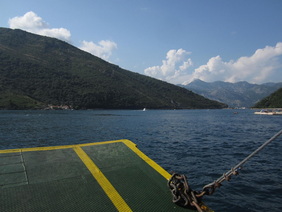
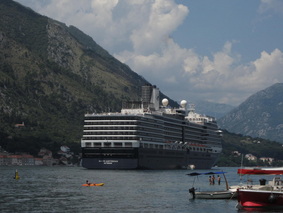
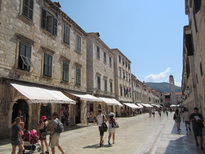
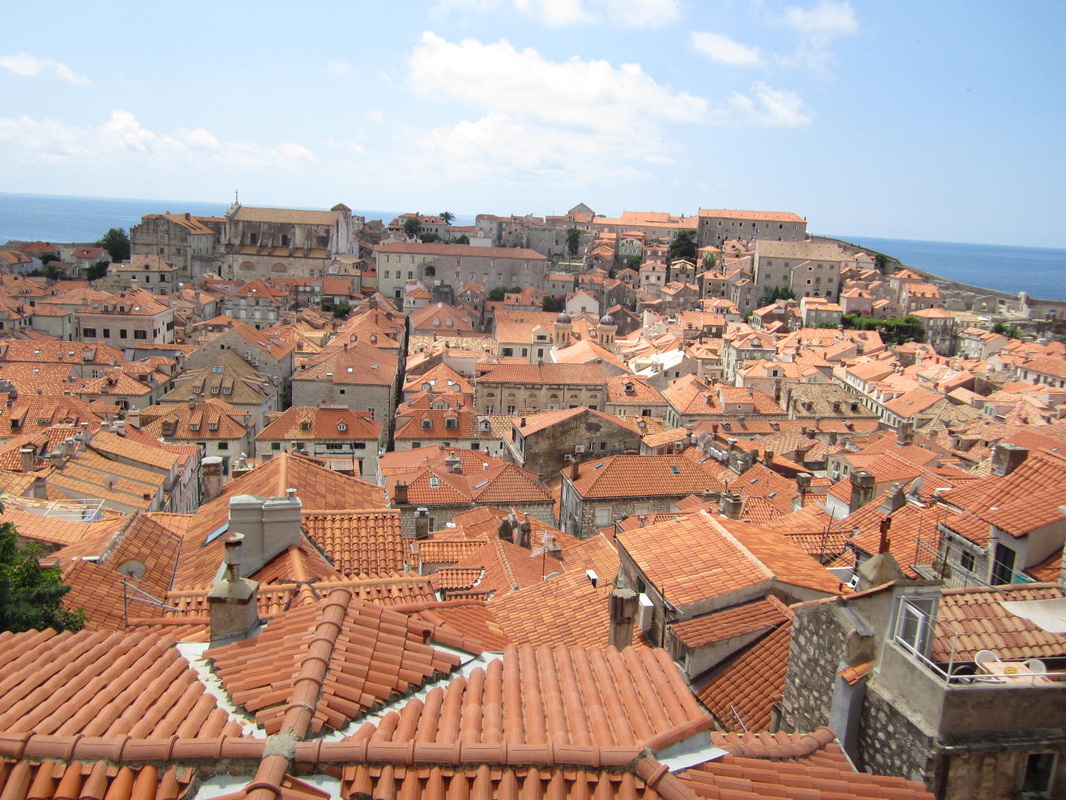
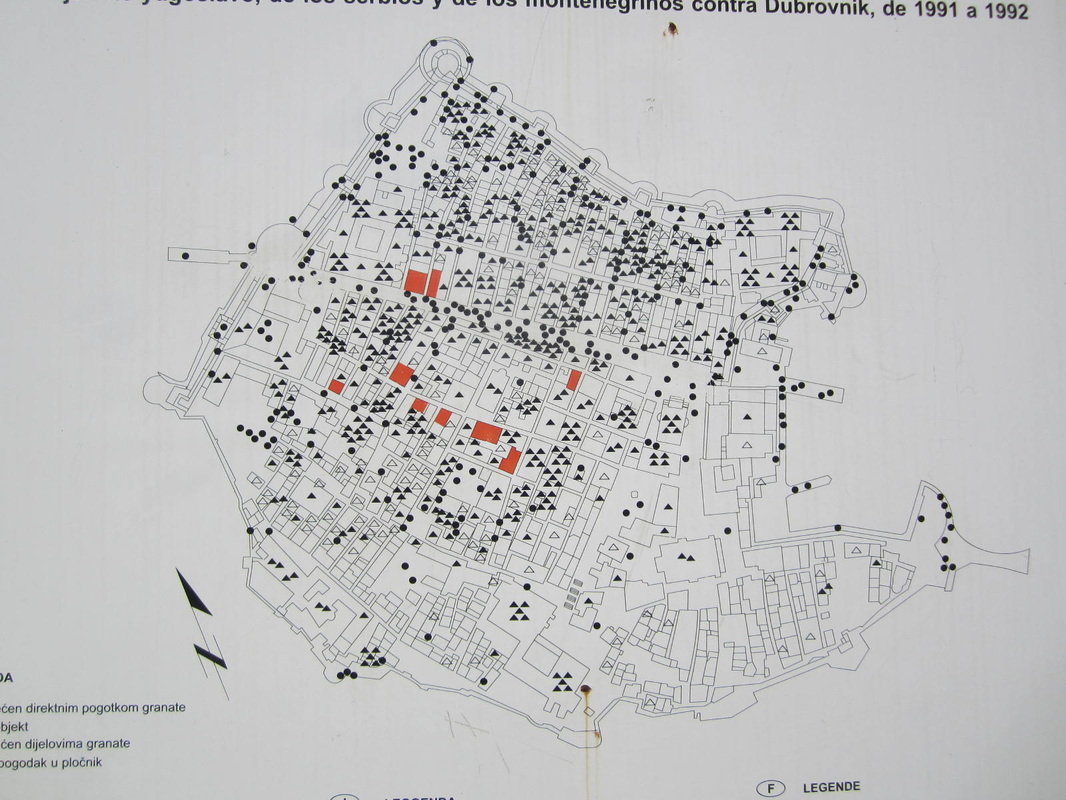
 RSS Feed
RSS Feed
